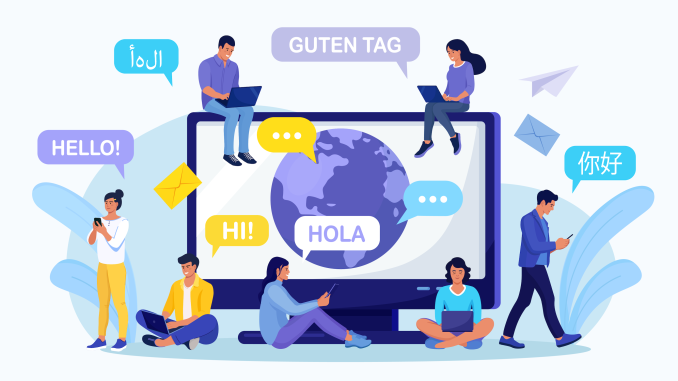
In our globalized world, where people travel, trade and communicate with people around the world and where goods are made in one country for sale in another, the ability to communicate across languages has never been more and more valuable. It happens against the backdrop of an increasingly standard language which is spoken in a small number of big nations, but which is ultimately the language of only a relatively few. For policy makers, decision makers and teachers alike this presents an unprecedented opportunity.
Using bilingual education, which means teaching two languages to students, has become an important strategy for training the generations of the future around the world. However, this approach also has a number of challenges that educators and policy makers must face head-on.
Advantages of Bilingual Education
Possible cognitive benefits
The engagement of different parts of the brain in bilingual education can bring benefits to cognitive development.
Studies have shown that bilingual individuals generally have better problem-solving skills, better recall and greater cognitive flexibility. Shifting between languages can improve functions of the executive like attention control and multitasking. The Cognitive Development of People Who Are Bilingual in this sense is nothing short of magic.
Better Performance at School
As has been proven in research, bilingual students generally do as well in academic contexts as their monolingually educated peers do — or even better. These cognitive skills acquired during the processes of bilingualism can be transferred to just about any discipline with similarly good results. In contrast, as the case of bilingual students shows, learning languages twice can bring strong literacy benefits not only in a second language but also–because bilingual students read and write more than their monolingual peers, and in a wider variety of subjects of course–overall.
Cultural Sensitivity and Competence
The various cultures with which a bilingual education provides much contact help students to build appreciation for diversity. In this increasingly global, multicultural world there are times when an America needs to be able work alongside Japanese people and understand their culture if it is going prosper.
Therefore understanding different national cultures and their viewpoints is extremely important if one wants to be able communicate or cooperate effectively with people from other countries, a point often made by practitioners of linguistic Business English.
Career Benefits
In the global job market, bilingualism is very popular. Anyone who can write two languages fluently is worth his salt to a multinational company or any enterprise that serves a multilingual public. In addition to having access to a wider range of employment possibilities than monolingual people, pay is higher for people who are bilingual.
Resource Allocation
From the examples of Canadian bilingual education and the program for Spanish-speaking students in US(illegal immigrants) we can see that to institute such a dual language program takes large human and capital costs. Many resources are needed as well. For instance, schools must employ qualified bilingual teachers, produce high quality instructional materials that can be used at all levels of teaching in both languages, and figure out what kind of classroom settings would undergo adaptation without sacrificing social adult lives or studies for one segment of the school population at another’s expense.
This is still proving to be a problem in several regions. In these places, financial constraints make it hard to give the requisite inputs. There simply aren’t any.
Curriculum Development
Compiling a bilingual study program that provides equality of time in both languages is no easy task. Educators have to make sure that students receive a good education in both languages without either losing the content or concentrating more on one language than the other. This kind of planning and control involves frequent checks for understanding to make sure there are no gaps (see Chapter Read More Evaluation and Assessment Evaluating the Progress of Bilingual Students It is sometimes more complicated to judge the progress of bilingual students than it is that monolingual student. Standardized testing frequently fails to reflect full command in either language, and teachers need alternative measures which can give them a reliable picture of student ability.
Parental and Community Involvement
Successful bilingual programmes also depend on parental and community support. In their homes parents must raise their children with a bilingual culture, and community institutions should be linked to educational purposes. In some cases it may happen that the parent is not fluent in the second language, or has not experienced this kind of approach. This can do harm to the child Social Integration
For example, bilingual children may have to face problems in terms of social segregation, especially if all their classmates are monolingual. Children may feel left out, or may not know what to do with themselves when they cannot talk to others who do not share their language ability. Schools should create an atmosphere equal to and respecting each individual’s own background which is conducive to social interaction among peers. Moving Ahead In order to gain advantages and overcome the difficulties of bilingual education, a wide coalition is required. Educators, politicians, parents and community leaders are also involved in this process. Together they must develop and implement effective bilingual programmes including investment in teacher training, the creation of learning situations more suitable for other languages spoken in small numbers, and ensuring that
bilingual education is open to all even people from lower-income backgrounds.
In our today’s world where everything is interconnected, and the ability to use two langauges is increasingly more important than ever since this world was born. By confronting difficulties and making of language learning are available, we will be offering the people tools for prosperity in our global multicultural society.